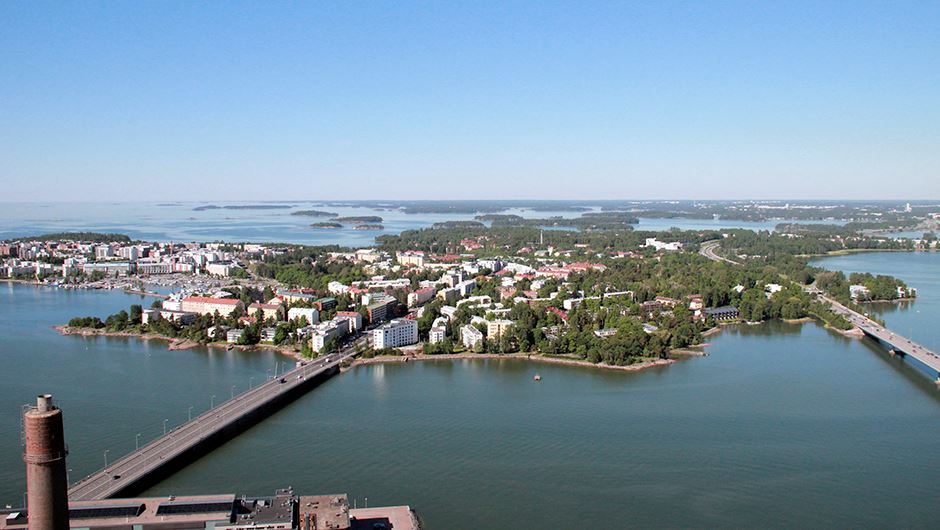Sustainable data centers as a service
Alliance planning and development phase starting in the seawater heat recovery project
‘Unique’ is a fitting word to describe Helen’s seawater heat recovery project in Salmisaari, which has now entered its approximately two-year planning and development phase. The official contract signing event for the development phase of the alliance was held in Helsinki on Tuesday, 6 September 2022.

The plan for the project is to convey seawater all year round to the heat pumps to be built in Salmisaari. The heat pumps can use seawater as cool as below +2°C, as well as electricity, for district heating production. Therefore, the project has understandably attracted a great deal of attention. Helen has studied the use of seawater in heat production since 2016.
In the planning and development phase of the seawater heat recovery project, the plans prepared by Helen will be completed for construction in cooperation with the alliance partners Helen, YIT and ACCIONA. During the development phase of the seawater system, extensive geological surveys will be conducted at sea, as well as in the Salmisaari area, for the purposes of the tunnel.
In the planning and development phase, the preliminary as-planned model is refined with the milestones specified by the alliance partners. The first task is to determine the final scope and implementation method of the project (such as the length of the tunnel). After this, the partners will focus on planning the details of the implementation. The planning will help specify the schedule and cost estimate. The goal at the end of the development phase will be to make a decision to move to the implementation phase, which will last approximately five years.
The seawater heat recovery project consists of two parts; the seawater system and the Salmisaari heat pump plant. The seawater system to be developed by the alliance will include an approximately 17-kilometre seawater intake tunnel that will likely be implemented using a Tunnel Boring Machine (TBM). A TBM has never before been used on Finnish bedrock at this scale. The seawater system also includes an approximately 9-kilometre water discharge tunnel.
The environmental impact assessment of the project was launched in May 2021 and has reached the report phase where the environmental impact of the project is assessed and benchmarked. Helen has conducted surveys on fish stocks, bottom-dwelling species, seabed sediments and other characteristics of the area. Helen has also measured temperatures over two winters to analyse the availability of the heat bound by seawater in the winter. The environmental impact assessment report will be submitted to the contact authority in early 2023, after which the alliance will prepare and apply for the necessary permits.
Helen considers heat pumps using environmental and waste heat an important factor in the transition towards a distributed energy system, where energy is produced carbon neutrally from the ground, air, water, and waste heat as well as in its objective of achieving carbon neutrality by 2030. Helen’s energy platform, in other words the heating and cooling network, provides an opportunity to bring together innovative technologies and production methods.
If put into action, the seawater heat recovery project will play a significant role in the heat production of Helsinki after this decade. A thorough planning phase is required before any final investment decisions can be made. The alliance must use the development phase to fill in the framework that forms the foundation of this exciting project.
The article was originally published in the Helen blog. It was written by Jaakko Tiittanen, Head of Project Management, Major Projects, at Helen.
YIT and ACCIONA to become alliance partners together with Helen in seawater heat recovery project



